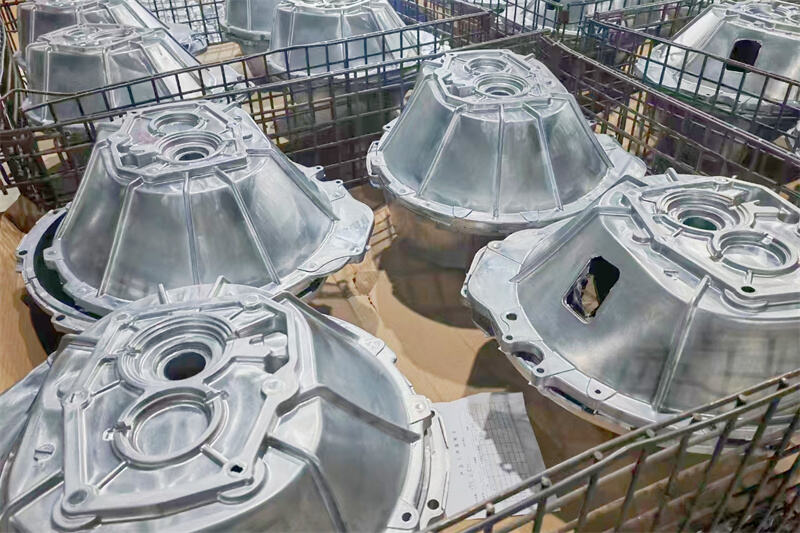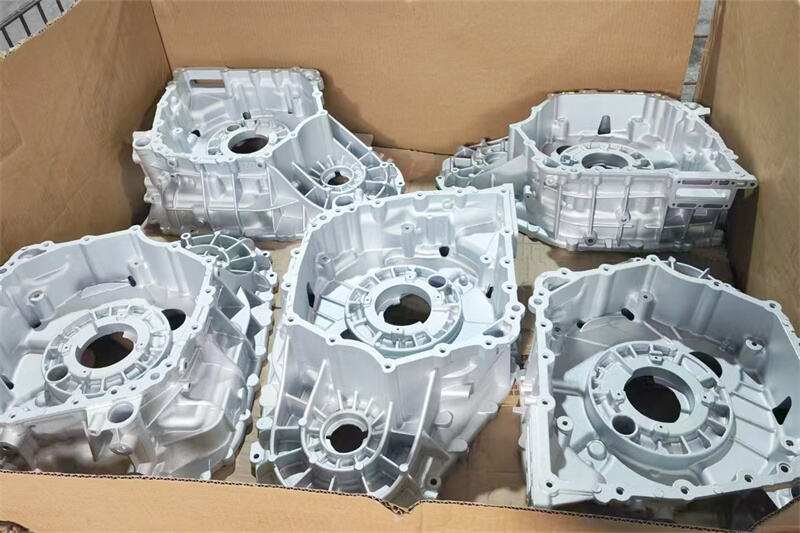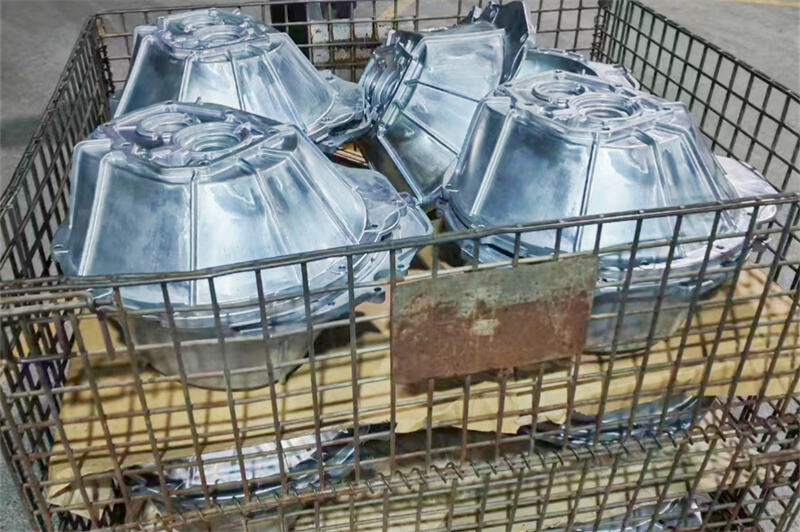Mail Us: [email protected]
Call For Us: +86-13929487727
Die casting, also known as pressure casting, is a precision casting method in which molten or semi-molten metal is rapidly filled into the cavity of a precision metal mold under high pressure and then rapidly cooled and formed under pressure to obtain a casting. The core of die casting lies in "high pressure" and "high speed". It uses a precise die-casting machine and a permanent metal mold (die-casting mold), and forcefully injects molten metal into the mold cavity through a piston.
(1)Mold preparation and spraying
① Mold: Made of high-strength tool steel (such as H13 steel), it is usually composed of a moving mold and a fixed mold, with precise cavities machined inside. The mold is equipped with cooling water channels inside to control the temperature.
② Mold closing: The cleaned moving and fixed molds are tightly closed on the die-casting machine, and the machine applies a huge clamping force to prevent the molds from being pushed open by high pressure during injection.
③ Spraying: Spray the mold release agent (mainly composed of water-based silicone oil or wax) into the cavity. This helps the casting to be demolded smoothly after cooling and temporarily reduces the surface temperature of the mold.
(2)Pouring and injection
This is the core step that distinguishes die casting from other processes.
① Pouring: Precisely measured molten metal (typically low-melting-point alloys such as aluminum alloys, zinc alloys, and magnesium alloys) is scooped out from the holding furnace and poured into the pressure chamber (barrel) of the die-casting machine.
② Injection: The injection punch of the die-casting machine advances in two stages:
a.Slow stage: Slowly advance, pushing the molten metal to the inner gate at the front end of the pressure chamber to expel air.
b.High-speed and high-pressure stage: Molten metal is instantly filled into the entire mold cavity at an extremely high speed (typically 30-100 meters per second) and under tremendous pressure (ranging from tens to hundreds of megapascals). This stage is the key to ensuring the clear contour and smooth surface of the casting.
(3)Pressure holding and cooling
After the molten metal fills the cavity, the punch will continue to maintain a certain pressure (holding pressure), forcing the molten metal to solidify under pressure to compensate for shrinkage and ensure that the interior of the casting is dense and the contour is clear.
The cooling system inside the mold enables the casting to solidify and take shape rapidly, with a very short cooling time, usually only a few seconds to tens of seconds.
(4)Mold opening and ejection
When the die-casting machine opens the mold, the moving mold part retracts.
The ejection mechanism (ejector pin) inside the mold is activated to push the formed casting out of the mold cavity.
(5)Subsequent processing
① Remove the sprue system: Die-castings will have gates, overflow slots and flash. These parts are usually removed by stamping on a dedicated trimming die.
② (Optional) Subsequent processing: Drilling, tapping, shot blasting, electroplating, spraying and other subsequent processing may be required.



|
Advantage: |
|
|
Extremely high production efficiency |
The cycle period is extremely short, ranging from tens of seconds to several minutes, making it highly suitable for large-scale and high-volume production. |
|
Excellent dimensional accuracy and surface quality |
The castings have small dimensional tolerances and high surface finish (Ra 1.6-3.2μm), and can usually be used directly without extensive mechanical processing.
|
|
High strength |
Due to rapid cooling under high pressure, the castings have fine grains and their mechanical properties (such as tensile strength) are superior to those of gravity castings. |
|
It can produce thin-walled and complex parts |
High pressure enables the molten metal to fill extremely fine patterns, allowing for the casting of parts with very thin walls (up to 0.5mm for zinc alloy and 0.8mm for aluminum alloy) and complex structures. |
|
Excellent replicability |
The thousands of castings produced by a single mold have a high degree of consistency and interchangeability. |
|
Insert casting can be achieved |
Before die-casting, parts made of other materials (such as magnets, bushings, and screws) can be placed in the mold and embedded inside the die-cast part. |
|
Disadvantage: |
|
|
The cost of equipment and molds is high |
The manufacturing cost of die-casting machines and metal molds is extremely high, making them only suitable for mass production to spread out costs. |
|
The types of alloys are limited |
It is mainly used for low-melting-point non-ferrous alloys, such as aluminum, zinc, magnesium and copper alloys. Since the mold is made of steel, high-melting-point cast iron and cast steel are basically impossible to be die-cast. |
|
It is prone to internal air holes |
When filling at high speed, air is prone to be trapped in the molten metal, resulting in tiny pores inside the casting. These pores are usually not heat-treatable and are not suitable for welding; otherwise, they will bubble due to gas expansion. |
|
Weight limit of parts
|
Due to the limitations of equipment clamping force and mold size, die-castings are generally not suitable for manufacturing particularly large parts (but large die-casting machines can already produce large components such as automotive structural parts). |
It is mainly divided into two types according to the difference of the pressure chamber:
(1)Hot chamber die casting
① Principle: The injection mechanism (pressure chamber and punch) is directly immersed in the molten metal in the insulated crucible.
② Advantages: Extremely high production efficiency, fast cycle, low metal loss, and long service life.
③ Disadvantage: The pressure chamber and punch are constantly immersed in the molten metal, making them prone to corrosion.
④ Application: Mainly used in low-melting-point alloys, such as zinc, tin and lead alloys.
(2)Cold chamber die casting
① Principle: The pressure chamber and the holding furnace are separate. Each time an injection is made, a certain amount of molten metal is scooped into the pressure chamber with a spoon and then injected.
② Advantages: The service life of the pressure chamber and punch is relatively long, and alloys with higher melting points can be die-cast.
③ Application: The most commonly used method, mainly applied to aluminum alloys, magnesium alloys and copper alloys.
Die-castings are everywhere, especially in industries that have high requirements for lightweight, precision and mass production:
Automotive industry: engine block, transmission housing, clutch housing, steering wheel frame, wheel hub.
3C products (computers, communications, consumer electronics) : laptop casings, mobile phone frames/casings, camera bodies.
Home appliance industry: washing machine counterweights, refrigerator components, vacuum cleaner casings, motor end covers.
Hardware tools: electric tool housings (such as electric drills), gardening tool components.
Daily consumer goods: zipper pulls, door handles, toy models.
A: Yes, we are factory in Guangdong, China.
A:
Machining is 3-7 days for sample, 15-20 days for batch according to quantity;
Molding is 25 days for sample, 15-20 days for bulk.
A: Yes, we can, it need the sample fee, but can be refunded when place bulk order.
A: We offer flexible payment methods including bank transfer (TT), PayPal, Western Union, and Letters of Credit to facilitate secure global transactions. 30%-50% in advance, pay balance before shipping.
A: Yes, we can accommodate custom logos and packaging designs based on order quantities. Please discuss your specific needs with our sales team.
A: Yes, we support OEM/ODM customization based on your technical drawings, 2D/(PDF/CAD)3D(IGES/STEP).

Copyright © Dongguan Yuanji Technology Co., Ltd. All Rights Reserved - Privacy Policy